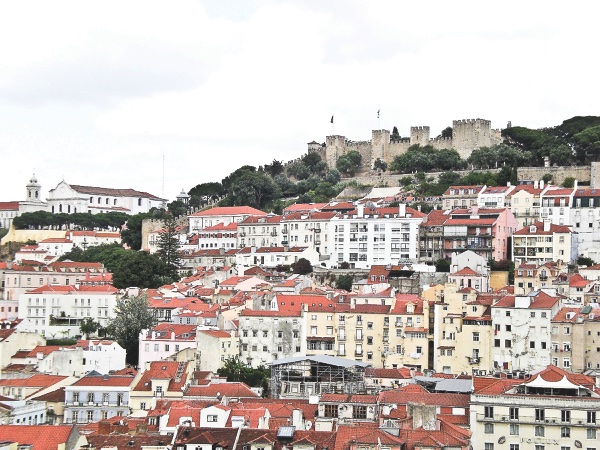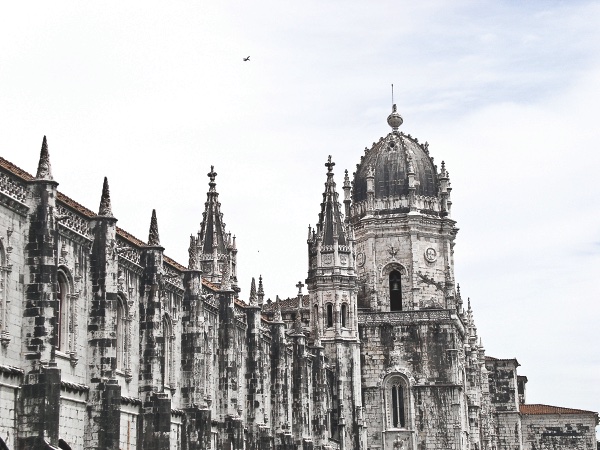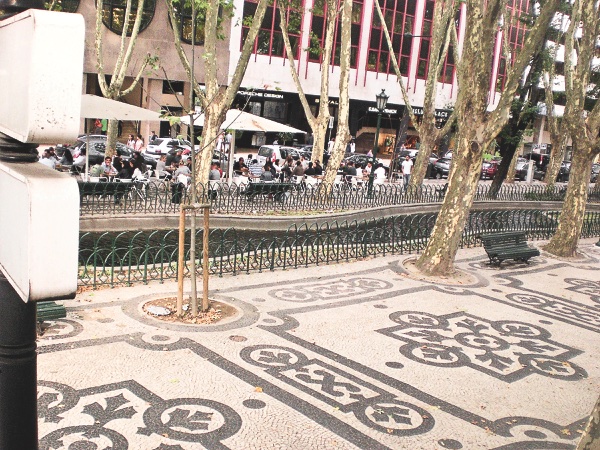The winds of Gitche Gumee definitely paid us a visit this winter and brought along some of the white stuff but that has ended, and while summer is soon approaching, it’s now the “shoulder” season for travel. The spring and fall seasons offer excellent times for travel and generally at reduced rates. You may also avoid crowds and long lines for exhibits. If you would like to visit a warm-er and happening place, think Portugal, especially Lisbon. My daughter recently returned from a week in Lisbon and had a great time—the sights, museums, cafes, pastries, castles, and more. So brush up on your Spanish—not the native language, but Spanish and Portuguese are the most similar languages within the Latin-based language family, or you can just stick to English as most of the people there understand it.

(Photos provided)
The Gulf Stream, yes the same one, flows off the west coast of Portugal and allows Lisbon, a city of 500,000, to enjoy a comfortable climate with mild winters and warm summers. Being that close to the ocean, also brings fast-changing weather so plan accordingly. With the Atlantic on one side (about 30 minutes on the train) and built on the banks of the Tejo River, water activities abound for the adventurist. Lisbon, the oldest city in Western Europe, exceeds Paris, London, and even Rome by centuries. The city rises to the north of the river presenting steep streets and walkways. For those wanting to venture forth on foot, take a good set of walking shoes. Otherwise taxis are plentiful and, if in doubt, have your doorman at the hotel tell the taxi where you want to go AND determine the fare beforehand. Take a map and a business card from the hotel to help your efforts getting back. Portugal also offers some of the most affordable options for European travel; food, wine, public transportation and lodging are generally less expensive.
Lisbon is a mixture of architecture, new and old.

Sections of the old town were spared during the Great Earthquake of 1755 and offer an interesting picture of Moorish architecture prior to the second Crusade in 1145. The Moor influence is represented by tile work that may cover the entire wall of buildings in the neighborhood. Yes, a lot of Europe is a lot older and still present today. Lisbon offers many sites unique to this history and combined with the geography, offers interesting means to see it.
Many westerners refer to Lisbon as the San Francisco of Europe. “Elevadores” or elevators that go sideways are large trams that transport people up the steep hills.

As you might expect, many people want to be in the city center as it offers easy access to all the attractions, transportation hubs, restaurants, and other attractions. Be prepared to pay a little more for everything, whereas if you are just outside the center, accommodations are just as nice but less expensive The same holds true for the restaurants. Want to save more money? Take the trams. Again think San Francisco. A city map will direct you to all the major sites, and trams offers an excellent way to inexpensively get up “close and personal” with the city. Tram #28 is the one everyone wants to take so expect it to be crowded. It will take you through some of the finer districts of the city and up to Castelo de Saint Jorge on top of the hill. The castle is open to tours and provides an excellent view of the city. For quicker trips around the city, there is also the subway with blue, green, yellow, and red lines—wow, we’re back in Chicago.
I’m sure half of your group will want to spend a day or more shopping so head to Baxia, also known as “lower town.” Wide pedestrian walkways will lead you past Art Deco storefronts, cafes, and street vendors to Avenida da Liberdade, if you’re looking for more up-market shops.
For a more historical tour, head to Belem, now a UNESCO site, where Portuguese adventures such as Ferdinand Magellanand and Vasco da Gama launched their ships to discover the world. The Belem Tower or Fort was built in 1515 to defend the port and support the voyages of discovery. It includes stonework honoring their accomplishments. Also in Belem is Jeronimos Monastery, also built in honor of the adventurers and hold the tomb of Vasco da Gama.
Need a break from sightseeing? Head to Casa Pasteis de Belem. For over 280 years the tart egg custard has been baked from a “secret” recipe created by Monks from the monastery. Originally baked and sold because the monks had no other source of income, the pastries have now become world famous so expect a line. That and a cup of coffee will set you up for the afternoon and more sightseeing and shopping.
If you’re looking for a little nightlife, be prepared to stay up late. The evening meal general starts at 9 p.m. and the bars/clubs go anywhere from 2 a.m. till 5 a.m. Oh, if you’re a light sleeper, be sure to get a room away from the nightclub scene.
Lisbon offers this and much, much more. After a week, our daughter felt she was just scratching the surface. Museums, food, beach, medieval to modern; it’s a city that changes with each neighborhood and offers a glimpse into a history that few are aware of today.




